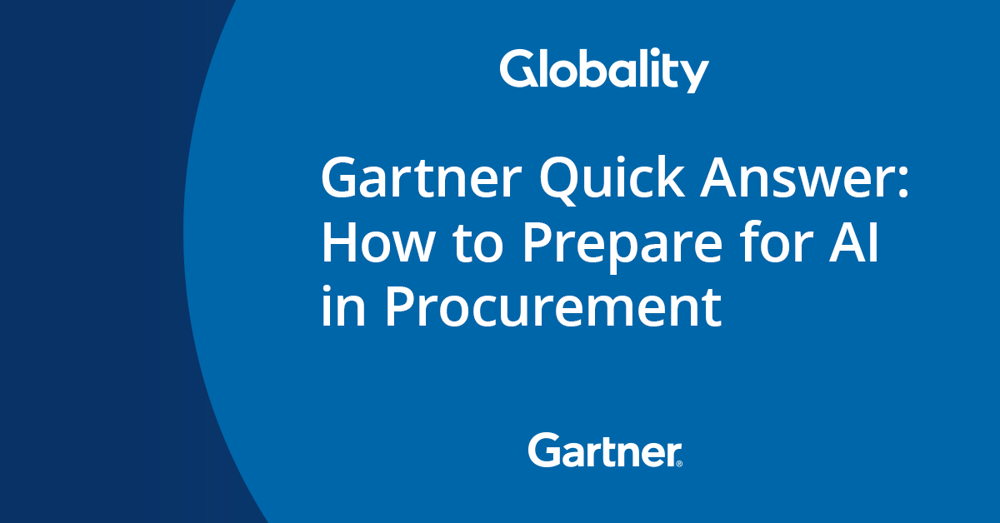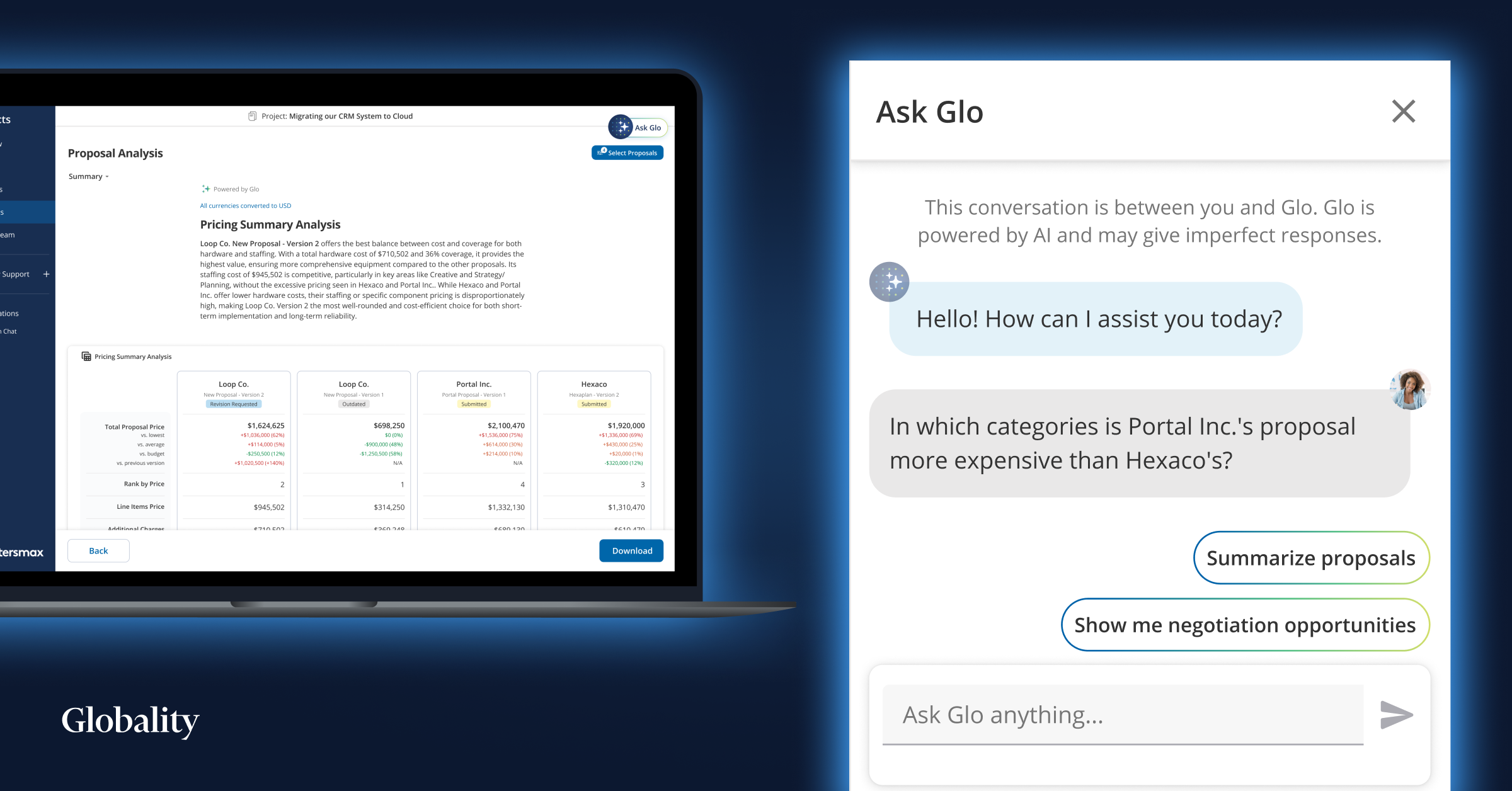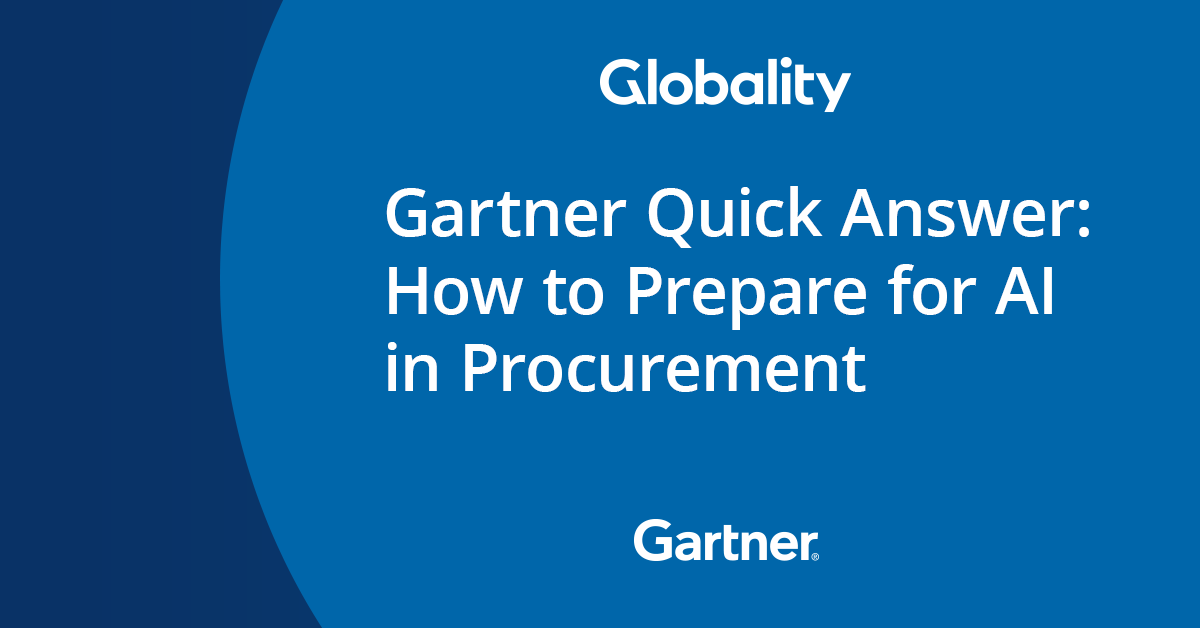Four Ways to Prepare for AI in Procurement

Every business unit is looking for ways to adopt AI-driven technology to increase productivity and efficiencies while reducing costs and procurement is no exception.
The Gartner Quick Answer: How to Prepare for AI in Procurement highlights the four key steps that CPOs and other sourcing leaders should take to embrace and adopt AI, enabling procurement to move from back-office function to a strategic growth driver and become a leader across the enterprise.
- Secure Leadership Support and Resources
One of the first steps in preparing for AI in procurement is to secure strong leadership support and the required resources. This involves:
- Educating Executives: Informing key stakeholders about the potential use cases and benefits of AI in procurement builds buy-in. Highlighting how AI drives cost savings, reduces supplier risks, and improves working capital creates a compelling narrative.
- Aligning with Organizational Goals: Ensure that AI initiatives are aligned with the organization’s broader AI strategy and roadmap. Prioritize tasks that demonstrate clear ROI.
- Securing Budget: Build a core team that includes cross-functional and technical members led by an AI champion.
- Map Processes and Identify Opportunities
To maximize the benefits of AI, companies need to comprehensively map their procurement processes and identify areas where AI can have the most impact:
- Process Mapping: Conduct a thorough mapping of outdated, manual procurement processes to identify repetitive pain points, bottlenecks, and data-intensive tasks that consume significant time and resources.
- Benchmarking KPIs: Establish benchmarks for key performance indicators (KPIs) such as cost reductions, cycle times, and compliance failure rates before AI implementation.
- Prioritizing Use Cases: Create a prioritized list of high-potential AI use cases for procurement, such as SOW creation, spend analytics, supplier discovery, contract lifecycle management, and risk analysis.
- Enhance Data Infrastructure and Quality
Quality data is the backbone of successful AI implementation. Companies need to enhance their data infrastructure and ensure the integrity and accessibility of their data:
- Data Inventory: Take stock of existing supplier master data, contract databases, and pricing data, evaluating their completeness and accuracy. This includes data from ERP systems, CRMs, supplier databases, and other repositories.
- Data Governance: Develop or adopt a schema for data cleansing, enrichment, labeling, and categorizing. Establish a robust data governance framework with specific access controls, security protocols, and compliance measures.
- Data Quality Assurance: Implement processes to ensure the reliability of data used for training AI models. This includes regular audits and updates to maintain high data quality.
- Select Suitable Solutions
Choosing the right AI technology solutions is crucial for effective AI adoption in procurement:
- Vendor Evaluation: Assess AI vendors and technologies that cater specifically to procurement needs, considering security protocols, integration capabilities, total cost of ownership, and vendor reputation.
- Solution Analysis: Analyze shortlisted AI solutions for their functionalities, compatibility with existing systems, and user reviews.
Click here to download the full Gartner Quick Answer: How to Prepare for AI in Procurement
And contact us for a demo of Globality’s autonomous sourcing platform – winner of Best Technology Provider at the World Procurement Awards – to see how it uses cutting-edge AI, built from the ground up, to deliver 70% efficiencies and 10-20% cost savings instantly.
Gartner, Quick Answer: How to Prepare for AI in Procurement 17 April 2024, By Naveen Mahendra
GARTNER is a registered trademark and service mark of Gartner, Inc. and/or its affiliates in the U.S. and internationally and is used herein with permission. All rights reserved.



